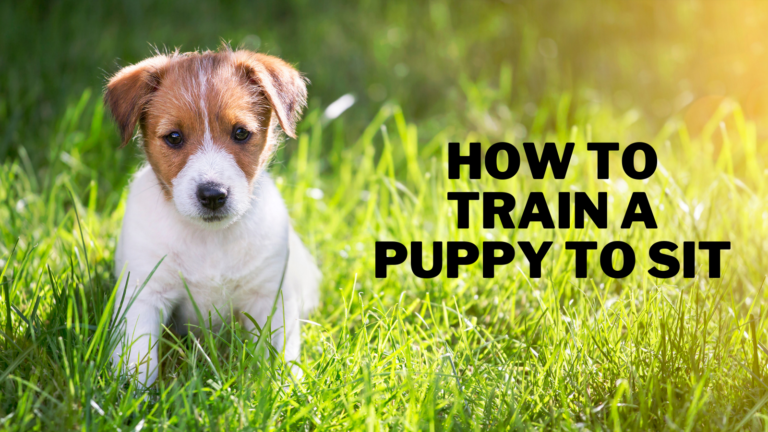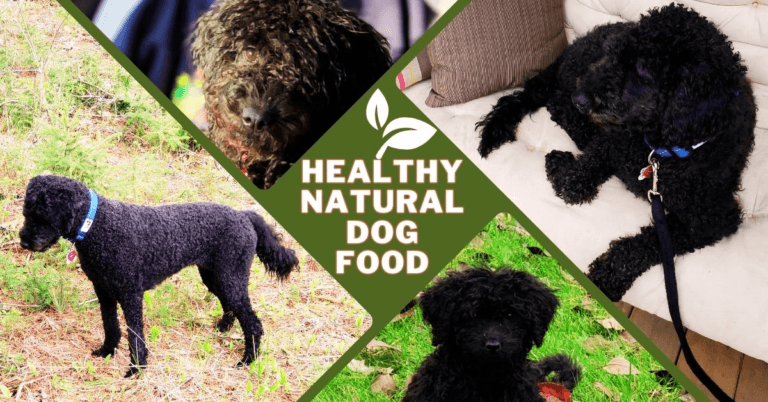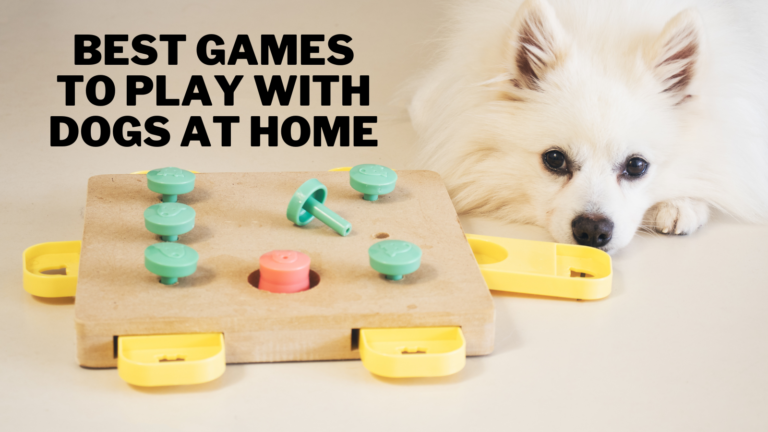Exploring Animal Communication
Exploring Animal Communication: What Your Pet Is Trying To Tell You
Ever wonder what your pet is trying to tell you? Animals communicate in fascinating ways, often using a mix of body language, sounds, and behaviours to express their needs, emotions, and desires.
Whether it's the wag of a dog’s tail, the purr of a content cat, or a bird’s excited chirps, decoding these signals can deepen the bond between you and your pet.
This article will explore how to better understand your pet's communication style, helping you respond empathetically and strengthen your relationship.
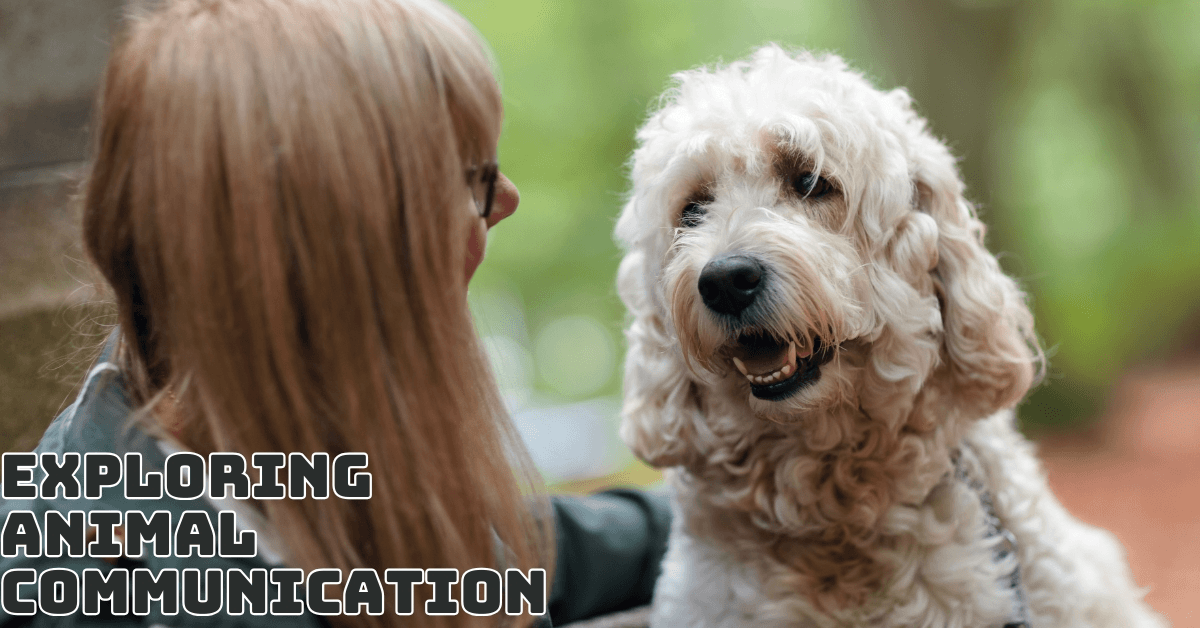
What Is Animal Communication?
Animal communication involves exchanging information between animals and humans using nonverbal cues such as body language, facial expressions, vocalisations, and energy signals.
While animals lack spoken language, they possess sophisticated communication systems to express their needs, emotions, and desires.
Each species has its signals: dogs might use wagging tails, barks, or ear movements, while cats communicate with slow blinks, meows, or tail flicks.
For example, a dog’s tail or cat’s posture can reveal whether they feel relaxed, anxious, or alert. Vocalisations, such as barking or purring, also provide insight into an animal’s emotional state, which can range from excitement to discomfort.
Additionally, animals often use energy or “vibes,” which many pet owners intuitively recognize, to express their emotions.
Interpreting these signals correctly requires careful observation and sensitivity to the unique communication style of each species and individual animal. This understanding strengthens the human-animal bond, fostering better relationships and mutual trust.
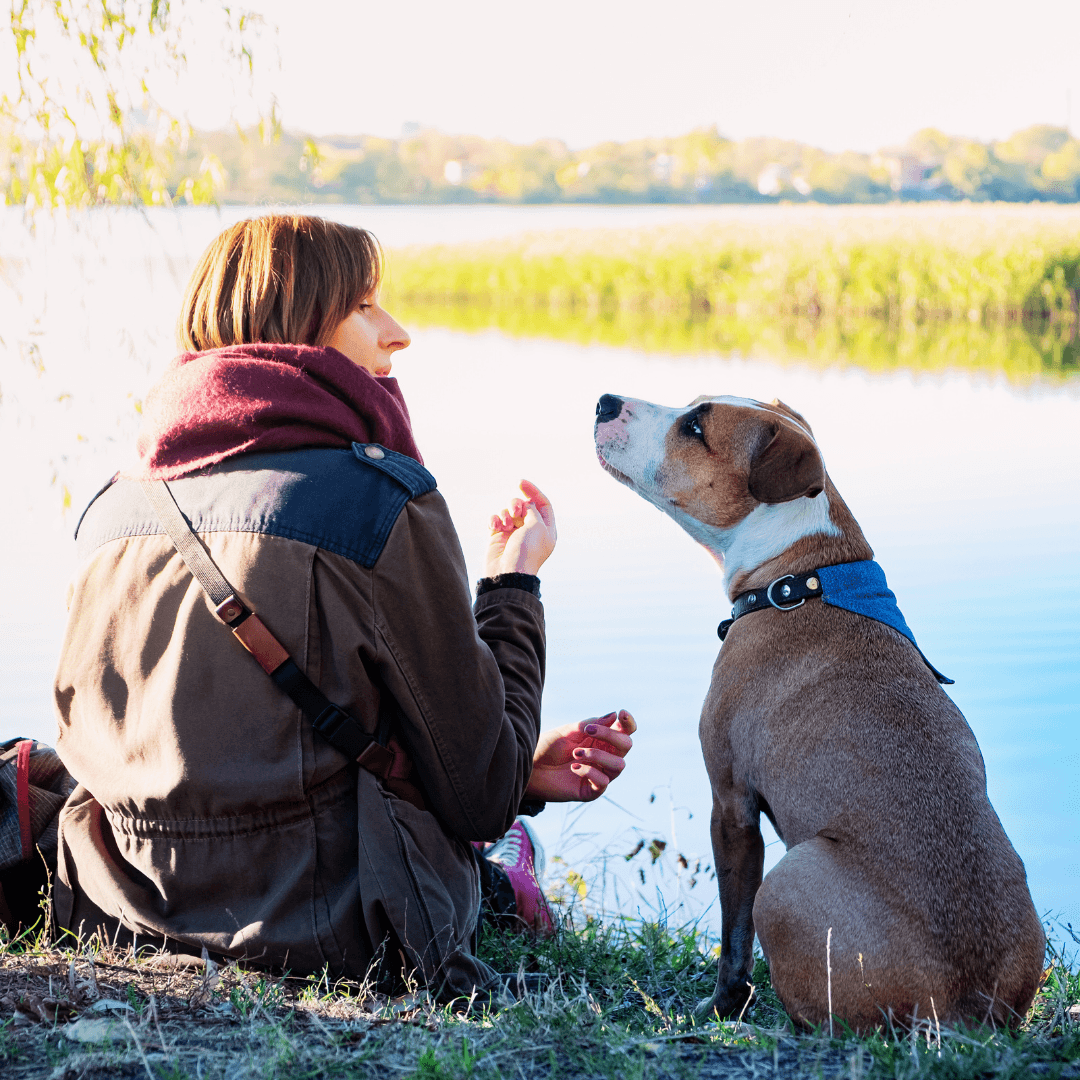
The Science Behind Animal Communication
Animal communication is well-studied in ethology and psychology. Pets communicate using body language, sounds, pheromones, and eye contact with humans and animals. Let’s explore the key ways common household pets interact:
1. Body Language
Animals, especially mammals, rely heavily on body language to convey messages. A dog wagging its tail might be happy, but a stiffly held tail may signal alertness or even aggression. A cat’s body language, such as arching its back or puffing up its fur, conveys fear or defence.
2. Vocalisations
Animals communicate using sounds such as barks, meows, chirps, and growls. Each type of vocalisation can have different meanings depending on context, tone, and duration. Dogs bark for attention, to alert you to danger, or out of excitement, while cats meow to signal hunger, discomfort, or affection.
3. Facial Expressions
Subtle changes in your pet’s face, such as the position of their ears, whiskers, or eyes, can tell you a lot about their mood. Cats, for example, may narrow their eyes when content, while dogs may display a “guilty” look when they’ve done something wrong.
4. Energy And Pheromones
While humans are less attuned to the pheromones animals release, these chemical signals play an important role in animal communication.
Dogs, for instance, use scent-marking to define their territory, while cats use pheromones in their cheeks to mark you as part of their family. Understanding these forms of communication is crucial to building a deeper, more intuitive connection with your pet.
Exploring Animal Communication
Animals communicate with us in various ways, using body language, vocalisations, and even energy. Understanding their signals can deepen your bond and help address their needs more effectively. Here are key signs to look for:
1. Body Language: The Silent Conversation
Pets use body language as one of their primary forms of communication. From a wagging tail to a raised ear, their physical cues offer a window into their emotions.
Dogs
A wagging tail doesn’t always mean a dog is happy. The speed and position of the tail provide important clues. A slow wag with the tail held low can signal uncertainty or anxiety.
On the other hand, a high, rapid wag often indicates excitement or eagerness. Additionally, raised hackles or a stiff, rigid posture can be signs of fear or aggression, meaning your dog may feel threatened or uncomfortable.
Cats
Cats can convey a wide range of emotions with their tails. A puffed-up tail indicates fear or alarm, showing the cat feels threatened. A gently swaying tail, however, usually suggests the cat is feeling curious or playful.
If your cat flattens its ears or hisses, it's a strong signal that it’s feeling anxious or threatened, and it’s best to give it space to calm down.
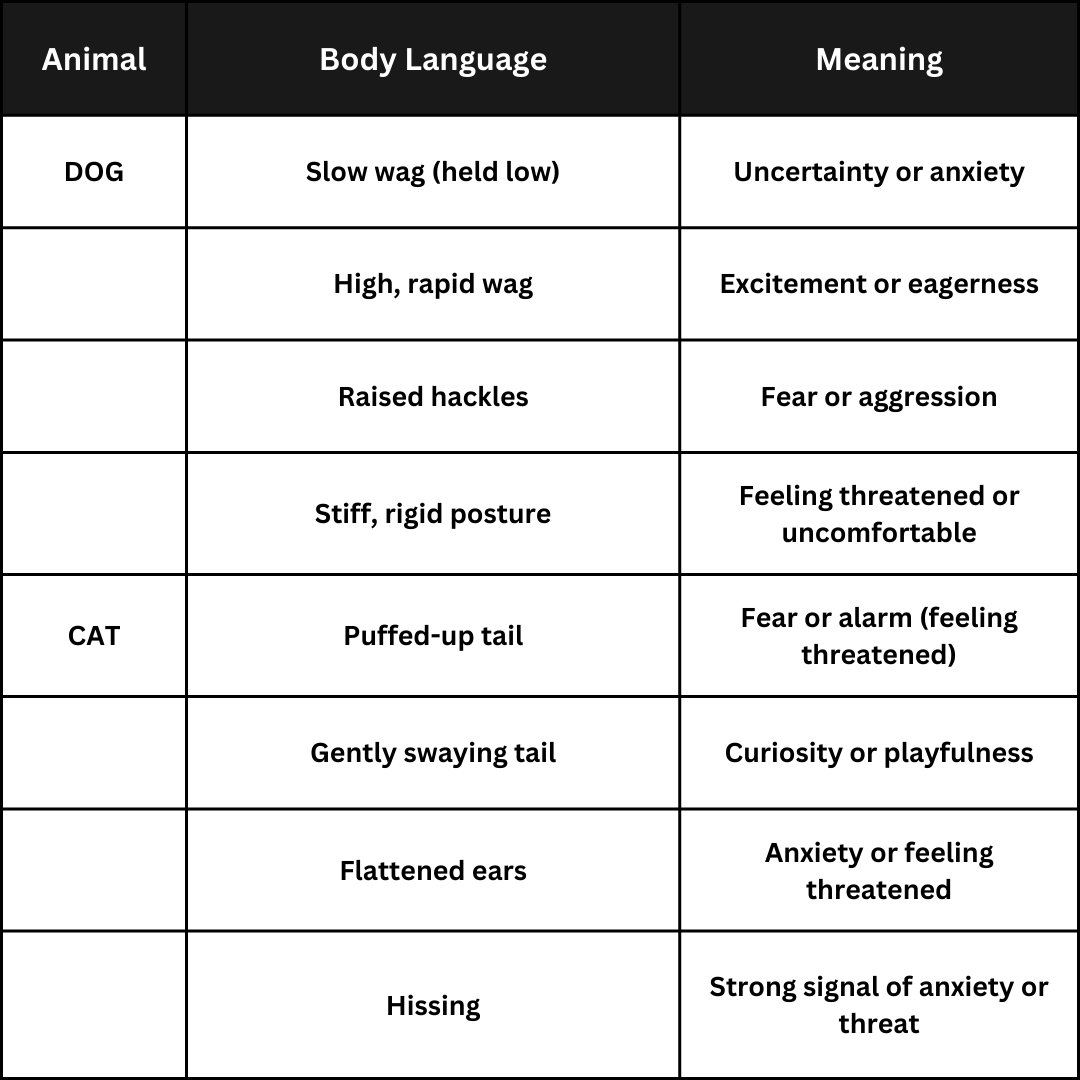
2. Vocalisations: What Do Those Sounds Mean?
Depending on context and tone, every bark, meow, or chirp can convey a different message.
Dogs
Dogs use different bark tones to express emotions. Short, high-pitched barks usually signal excitement or an invitation to play.
Conversely, low, continuous barking often indicates that the dog is on alert or trying to warn of potential danger.
Whining is another vocalisation that suggests the dog needs attention, feels discomfort, or is anxious. Growling is a clear indicator of agitation or distress, signalling the dog feels threatened or protected.
Cats
Cats communicate through meows and purrs for various reasons. A soft, gentle meow is often a friendly greeting, while a loud, persistent meow typically indicates hunger or demand for attention.
Purring is commonly associated with contentment and relaxation. Still, cats also purr in pain or stress, using the vibration to comfort and soothe themselves during difficult situations.
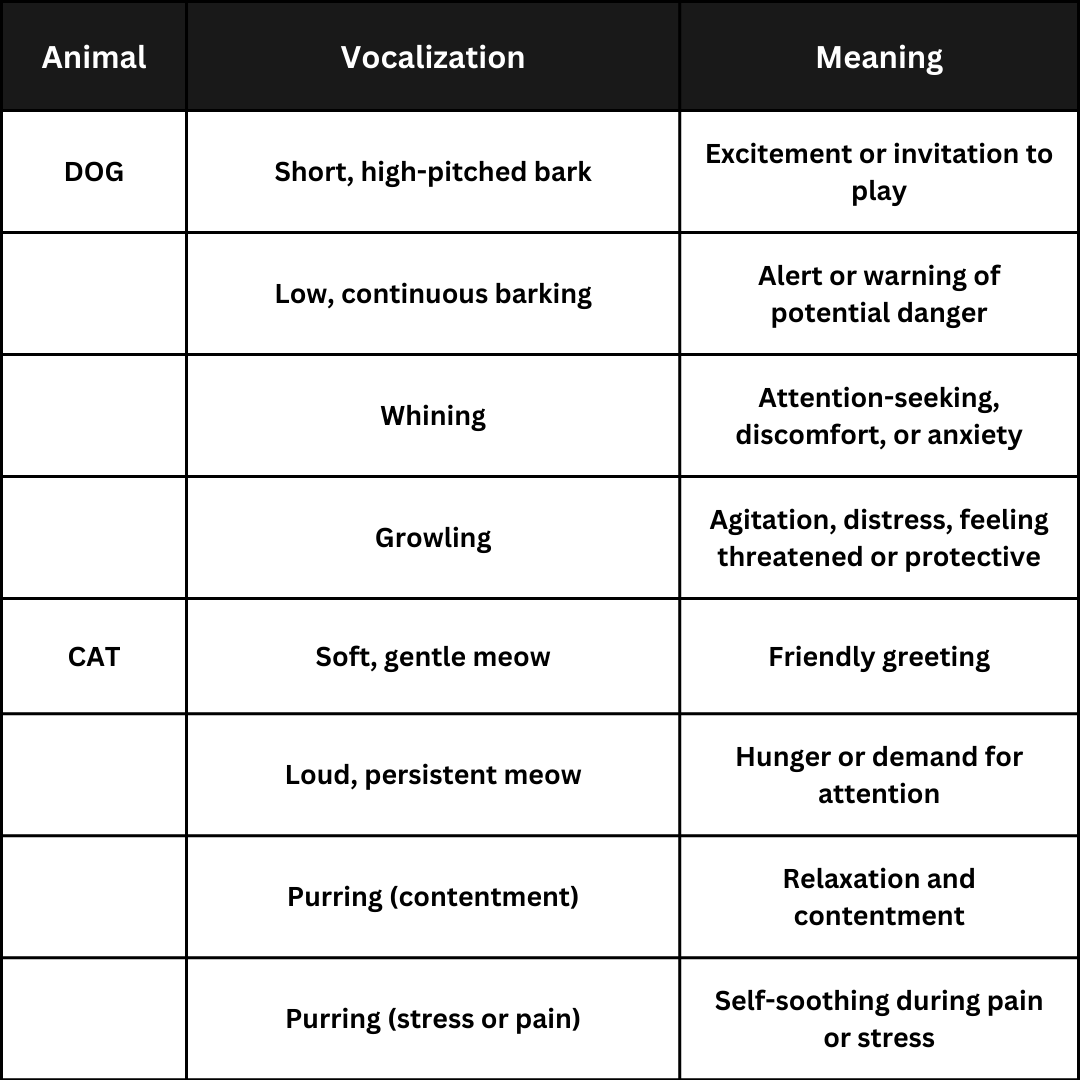
3. Facial Expressions: The Unspoken Word
Your pet's face can reveal a lot about how they feel.
Dogs
A dog with a relaxed, open mouth and soft eyes is typically calm and content. However, wide eyes with visible whites, known as “whale eye,” suggest fear or stress.
This look often means the dog feels uneasy in its surroundings. If your dog avoids eye contact, it’s usually a sign of submission or anxiety, showing that the dog is trying to be non-confrontational or is feeling uncertain about the situation.
Cats
Slow blinking is a powerful way cats express affection and trust. When your cat stares at you with half-closed eyes and gives a slow blink, it’s their way of saying they feel safe and comfortable around you.
Conversely, dilated pupils often show heightened emotions like excitement, fear, or playfulness. Cats’ pupils can change quickly, offering a window into their emotional state.
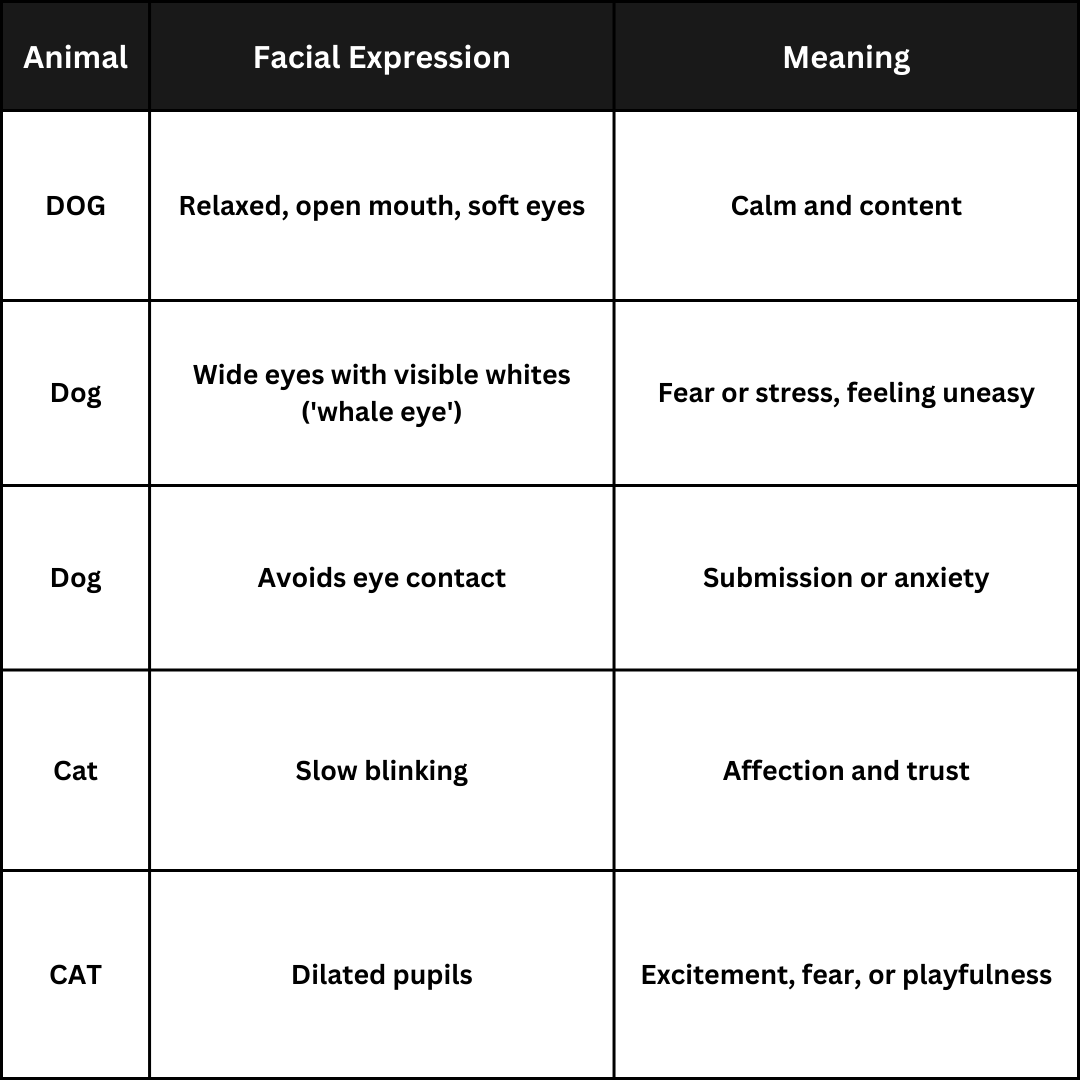
4. Behavioural Cues: Actions Speak Louder Than Words
Pets also communicate through actions. If your pet starts behaving differently, it might be trying to tell you something.
Dogs
When a dog licks you or your face, it’s typically a sign of affection or bonding. However, excessive licking can indicate anxiety or stress.
If your dog is pacing or panting excessively, these are signs of discomfort, possibly due to stress or a health issue.
Destructive behaviours like digging or chewing often signal that your dog is bored and lacks sufficient physical or mental stimulation. It may need more exercise or interactive playtime.
Cats
Kneading, or “making biscuits,” is a behaviour that cats carry over from kittenhood, often indicating that they feel comfortable and content.
However, if your cat starts hiding or avoiding you, it may be a sign of illness, stress, or discomfort, and it’s worth investigating further.
Marking or spraying, especially if it’s a new behaviour, can signal stress, territorial behaviour, or health issues like urinary infection that need immediate attention.
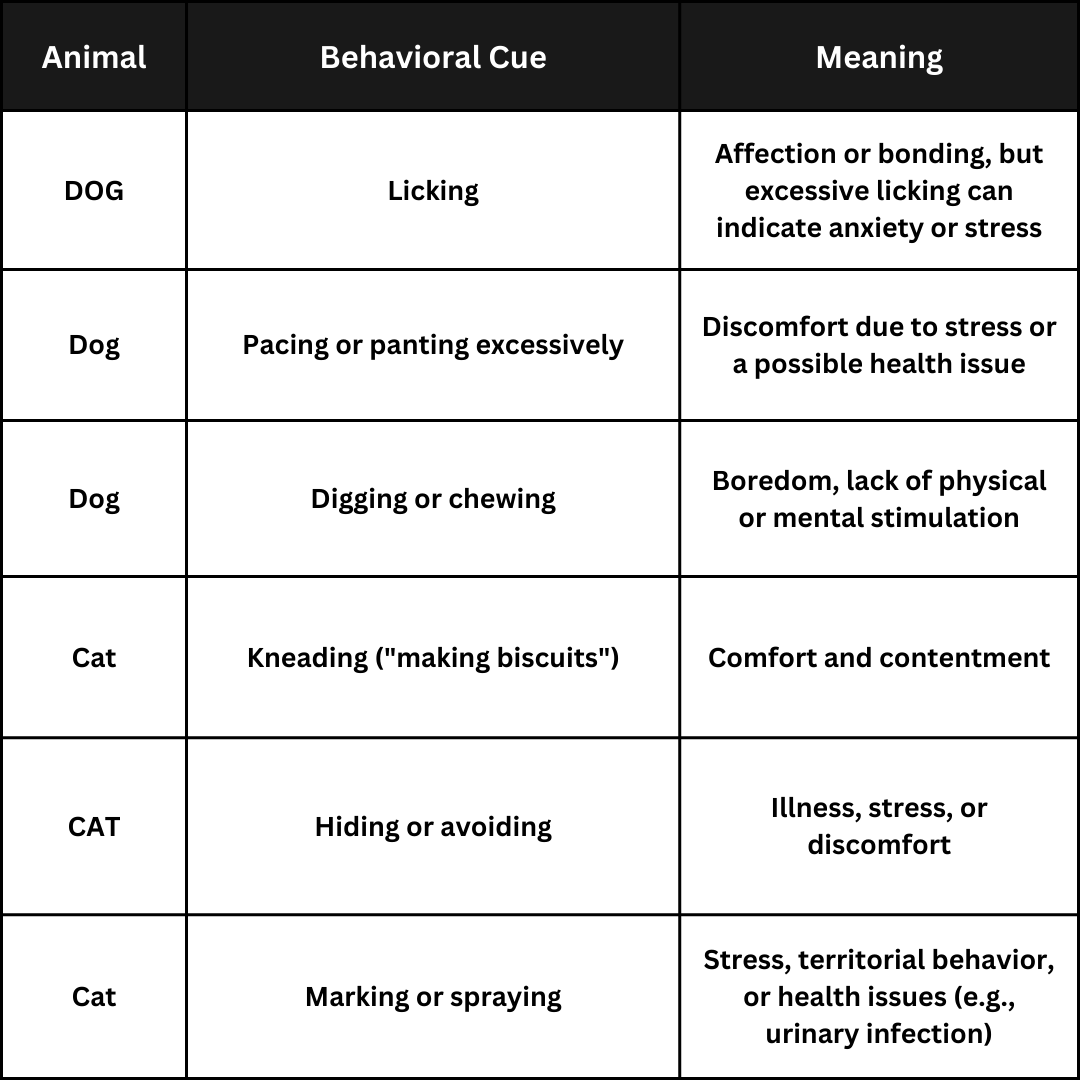
5. Eye Contact: What Your Dog or Cat’s Gaze Reveals
Eye contact is a powerful form of communication for dogs and cats, revealing their emotions, needs, and intentions.
Dogs
Prolonged eye contact signifies trust and affection in dogs, releasing oxytocin and inviting interaction. Conversely, avoiding gaze can indicate submission or discomfort, often in stressful situations, signalling a desire to avoid confrontation.
A hard stare, especially with tense body language, may suggest discomfort or aggression, indicating that the dog feels threatened or protective. Understanding these signs is essential to communicating effectively.
Cats
Cats use eye contact to communicate comfort and trust. Prolonged eye contact, especially with slow blinking, is a “cat kiss,” signalling affection.
In contrast, avoiding gaze may indicate anxiety, fear, or a desire for independence. A fixed, unblinking stare can signify curiosity or, if combined with tense body language, aggression or fear, often used to assert dominance in confrontational situations.
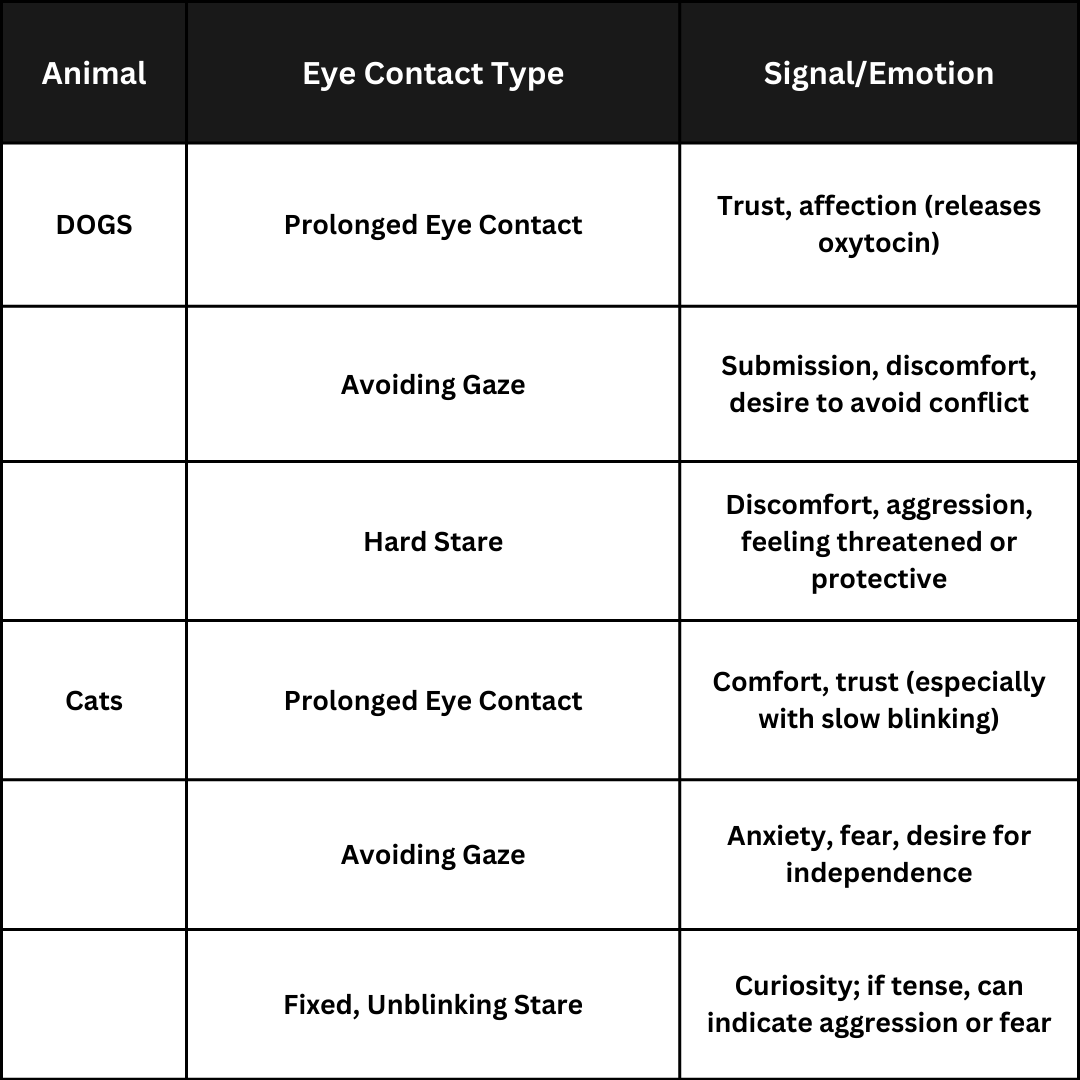
6. Ears And Head Movements: Understanding Your Pet’s Signals
Understanding your pet’s ear and head movements can reveal their emotions and needs, enhancing your bond and communication.
Dogs
Dogs use ear and head movements to express their emotions. Ears pinned back often signal fear, submission, or unease, especially in stressful situations.
In contrast, perked-up ears indicate curiosity and excitement, showing engagement with their surroundings.
Dogs may tilt their heads to understand sounds, while repetitive head shaking can suggest ear discomfort, warranting a vet check if excessive.
Cats
Flattened ears signal fear, aggression, or irritation in cats, often accompanied by hissing if they feel threatened. Conversely, perked-up ears indicate alertness and curiosity about their surroundings, such as sounds or movements.
While cats may not tilt their heads like dogs, turning their heads shows interest and engagement in assessing their environment or focusing on specific noises.
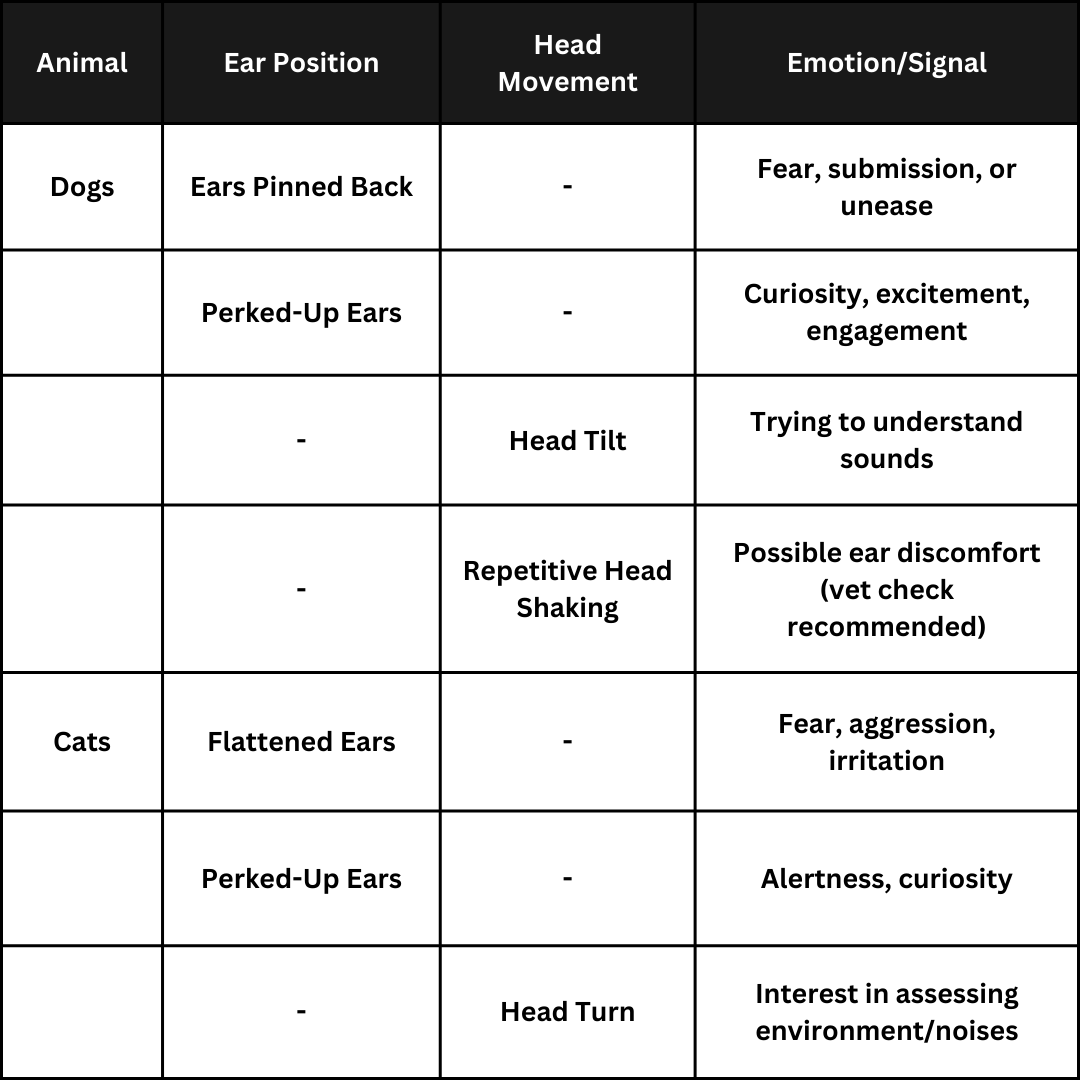
How To Improve Communication With Your Pet
Now that you have a better understanding of how animals communicate, here are some practical tips for improving your communication with your pet:
1. Pay Attention To The Animal's Body Language
Observation is essential for understanding your pet's communication. Each pet exhibits unique body language and vocalisations that indicate its feelings.
For instance, a dog’s tail position can reveal its emotional state—an excited dog may wag its tail vigorously, while an anxious dog may hold its tail low.
By consistently observing your pet in various situations, you’ll learn to interpret these signals, enhancing your ability to respond effectively to their needs.
2. Be Consistent With Your Commands And Signals
You must be consistent to communicate effectively with your pet. Using the same commands and gestures helps your pet understand your expectations.
Mixed signals can confuse them, leading to frustration for both of you. For example, if you use different words for the same command or change your hand signals, your pet may struggle to grasp what you want.
Reinforcing good behaviour with consistent rewards further solidifies their understanding and encourages desired actions.
3. Respond To Their Needs
As pets try to communicate their feelings, you need to respond appropriately to their signals. For example, if your cat’s tail twitches, it indicates irritation, and giving them space allows them to feel safe.
Similarly, if your dog is whining or barking, investigating the cause rather than ignoring it shows that you care and helps you address their needs effectively. This responsiveness strengthens your bond and builds trust.
4. Use Positive Reinforcement
Positive reinforcement is one of the most effective ways to promote good communication with your pet. When your pet successfully expresses their needs or feelings, rewarding them with treats, praise, or affection reinforces that behaviour.
This not only helps your pet learn what behaviours are desirable but also deepens your bond as they associate communication with positive experiences. Over time, this approach fosters mutual understanding and trust, making it easier for both of you to connect.
5. Practice Active Listening
Active listening involves being fully present and engaged when communicating with your pet. Instead of making assumptions about their feelings or intentions, focus on their cues and body language.
By paying close attention, you can better understand what your pet is trying to convey. Like humans, animals appreciate being “heard,” and practising active listening can significantly improve your communication, leading to a stronger, more trusting relationship with your pet.
6. Trust Your Gut
Your intuition is often your best guide when understanding your pet’s emotions. If you sense something is off—whether your pet is acting differently or displaying unusual behaviour—trust your instincts and investigate further.
Checking in on your pet's well-being can help identify any underlying issues. This care ensures your pet's well-being, improving your and your animal partner's mutual respect and trust.
7. Learn Their Unique Signals
Every pet has distinct ways of expressing itself, including unique vocalisations and body language. Observe and document these signals, noting differences in their sounds and postures.
For instance, an excited bark may differ from a warning bark, and the position of their ears can reveal their mood—upright for alertness and relaxed for calm.
It's crucial to comprehend these subtleties of your pet's body language and vocalisations to communicate with them effectively and meet their demands.
8. Create A Routine
A regular daily schedule can make your pet feel more secure and less stressed and anxious. Regular feeding times, play sessions, and walks create predictability, allowing your pet to anticipate daily activities.
This shared understanding between you and your pet aids communication as they will become accustomed to your schedule. A stable routine helps your pet feel more confident in their environment, enhancing their overall well-being.
9. Incorporate Interactive Games
Interactive games are a fun way to enhance communication with your pet while providing mental stimulation. Use toys that require your pet to respond to commands or cues, helping them learn to associate actions with specific signals.
Games like fetch or hide-and-seek reinforce their understanding of commands and strengthen the bond between you and your pet. This engagement creates a positive atmosphere for learning and interaction.
10. Utilise Visual Cues
In addition to verbal commands, incorporating visual cues or hand signals can significantly enhance your communication with your pet.
Visual cues provide a clear and immediate way for your pet to understand what you’re asking, especially in noisy or distracting environments.
For example, using a specific hand signal when giving a command can reinforce their learning. This multimodal approach helps your pet grasp your expectations more effectively, improving responsiveness.
11. Observe Their Environment
Attention to your pet’s behaviour in different environments is crucial for understanding their communication needs. Some pets may feel overwhelmed in crowded places or stressed in unfamiliar settings, affecting their ability to respond to you.
By identifying these environmental triggers, you can adjust your interactions accordingly, offering support and comfort. This attentiveness improves communication and helps your pet feel more secure and understood.
12. Keep Training Sessions Short And Fun
Short, enjoyable training sessions are key to improving your pet’s responsiveness to communication. Keeping sessions brief and engaging prevents your pet from becoming bored or frustrated.
Frequent, positive training helps reinforce their understanding of commands while creating a fun bonding experience. Incorporating games and rewards during these sessions maintains your pet's interest, making them more likely to engage with you and learn effectively over time.
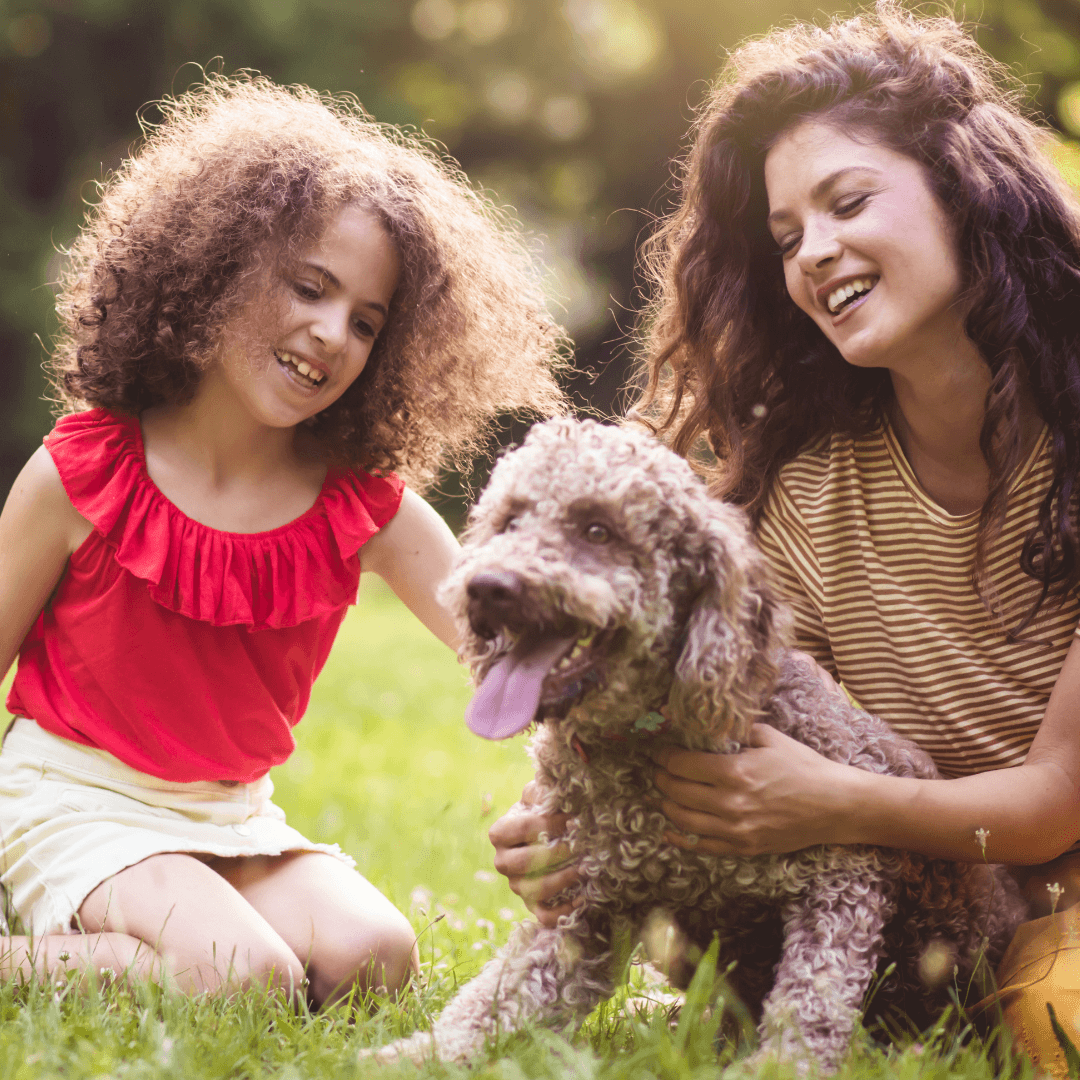
FAQ
1. How Can I Tell If My Pet Is In Pain?
Answer: Signs of pain in pets can include vocalisations (whining or growling), changes in appetite, lethargy, reluctance to move, hiding, or unusual grooming behaviours. If you think your pet may be uncomfortable, it's critical to get it evaluated by a veterinarian.
2. Is It Possible For Pets To Learn New Communication Signals?
Answer: Yes, pets can learn new signals or commands through consistent training and positive reinforcement. Using visual cues alongside verbal commands can help them understand your expectations more effectively.
Conclusion
Understanding animal communication is essential for fostering a deeper bond with your pets. Whether a wagging tail or a soft meow, each behaviour offers insights into their feelings.
Embracing these cues enhances your relationship and promotes their well-being. Paying attention to and reacting to your pets may establish a peaceful atmosphere where you and your furry friends can flourish together.
I trust you enjoyed this article on Exploring Animal Communication: What Your Pet Is Trying To Tell You. Stay tuned for more blog posts soon. Take care!
JeannetteZ
>>>Please click here to read my article on A Full Overview Of Dogs And Their Activity<<<
>>>Brain Training For Dogs Review<<<
My #1 Dog Training Recommendation
Your Opinion Is Important To Me
Do you have thoughts, ideas, or questions? I would love to hear from you. Please leave me your questions, experiences, and remarks about this article, Exploring Animal Communication: What Your Pet Is Trying To Tell You, in the comments section below. You can also email me at Jeannette@Close-To-Nature.org.
Disclosure
This post may contain affiliate links. As an Amazon Associate and other affiliate programs, I earn from qualifying purchases at no extra cost to you. Please read my full affiliate disclosure.
You might also enjoy these blog posts:
Common Symptoms Of Stress In A Dog You Shouldn’t Ignore
Interesting Facts About White-Tailed Deer
Largest Owls In The World: Majestic Giants Of The Wild
Interesting Facts About Owls That Will Fascinate You
Best Container Flowers For A Thriving Garden


